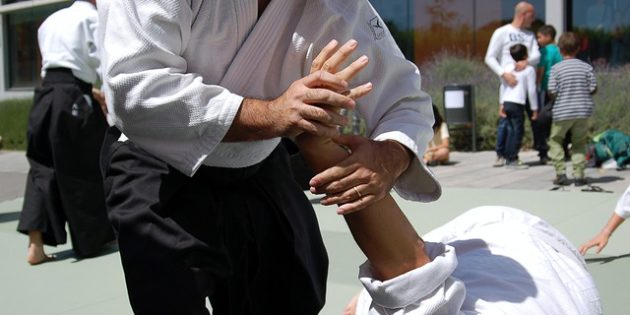I have been interested in the Martial Arts for as long as I can remember.
When I was at university, I practiced Karate and then when work forced me to moved away from my Dojo in Plymouth I took up Tai Chi (which I still practice to this day).
Then after being in the martial arts wilderness for a few years I fulfilled a life long ambition and started studying the art of Aikido 4 years ago with the Swindon KSMBDA Club.
Not only is Aikido a very powerful defensive art, it is also a fabulous mind and body development process that has significant benefits on many different physical, mental (and even spiritual) levels.
It is an evolving art and one where you are constantly learning as your skill and levels of understanding deepen
After 4 years of training I now find myself preparing for my Black Belt.
As you can probably imagine to get to the 1st Dan (Black Belt) level in any martial art not only requires years of dedicated training and practice, but these rights of passage to wear the coveted Black Belt culminate in an arduous and gruelling grading.
The Black Belt Grading (for the KSMBDA Association) takes place once a year at the dojo of Sensei Kolesnikov in Oldham.
Over several hours you are tested on the power of your Ki, your ability in each of the moves, your skill with the bokkan (sword) and the ability to deal with a repeated 4 man attack.
It is a very demanding process and as you would expect I am training very hard to get into shape and to develop my skill to the required standard just to be invited to grade.
One of the challenges we face is being able to remember the moves from their Japanese name.
Sensei Kolesnikov who takes the grading will call out a move and immediately you are attacked by a black belt and you have to respond with the correct defence instinctively – this is repeated for as many as 35 different moves in random order.
The only guaranteed order in this process is that the last 3 sequences are what are called “The 5 Arts” which essentially are the same attack but dealt with in 5 different ways.
They are called the Yokomenuchi 5 Arts, The Ushirotekubitori 5 Arts and the Katatetori 5 Arts and they are done in that order.
Whilst training at the dojo the other night, one of the Black Belts helping me said that the easy way to remember the order is YUK (first letter of each name) because by the time you get to that stage of the grading you will feel Yuck! (Meaning you will be worn out)
This is a classic case of an in situ mnemonic that is so simple and so relevant and of course so easy to remember.
The strategy it uses is that it takes the first letter of the things we want to remember and then place them in a more memorable word in the same order.
Just like SPA for the Philosophers (see my last post) here we have YUK:
Yokomenuchi 5 Arts
Ushirotekubitori 5 Arts
Katatetori 5 Arts
The relevance of this new word to the situation that we will need it is also an added bonus – by the time I get to this stage of my grading, I really will feel Yuck!
Of course this sort of mnemonic relies on you knowing the names of the 5 arts in the first place and then use of the memory device is about helping to remember the order.
It is a very simple process but it works and you will find probably hundreds of examples, some of which I will share with you in future posts.
So if you have a mnemonic like this that you use, tell me about it in the comments below.
